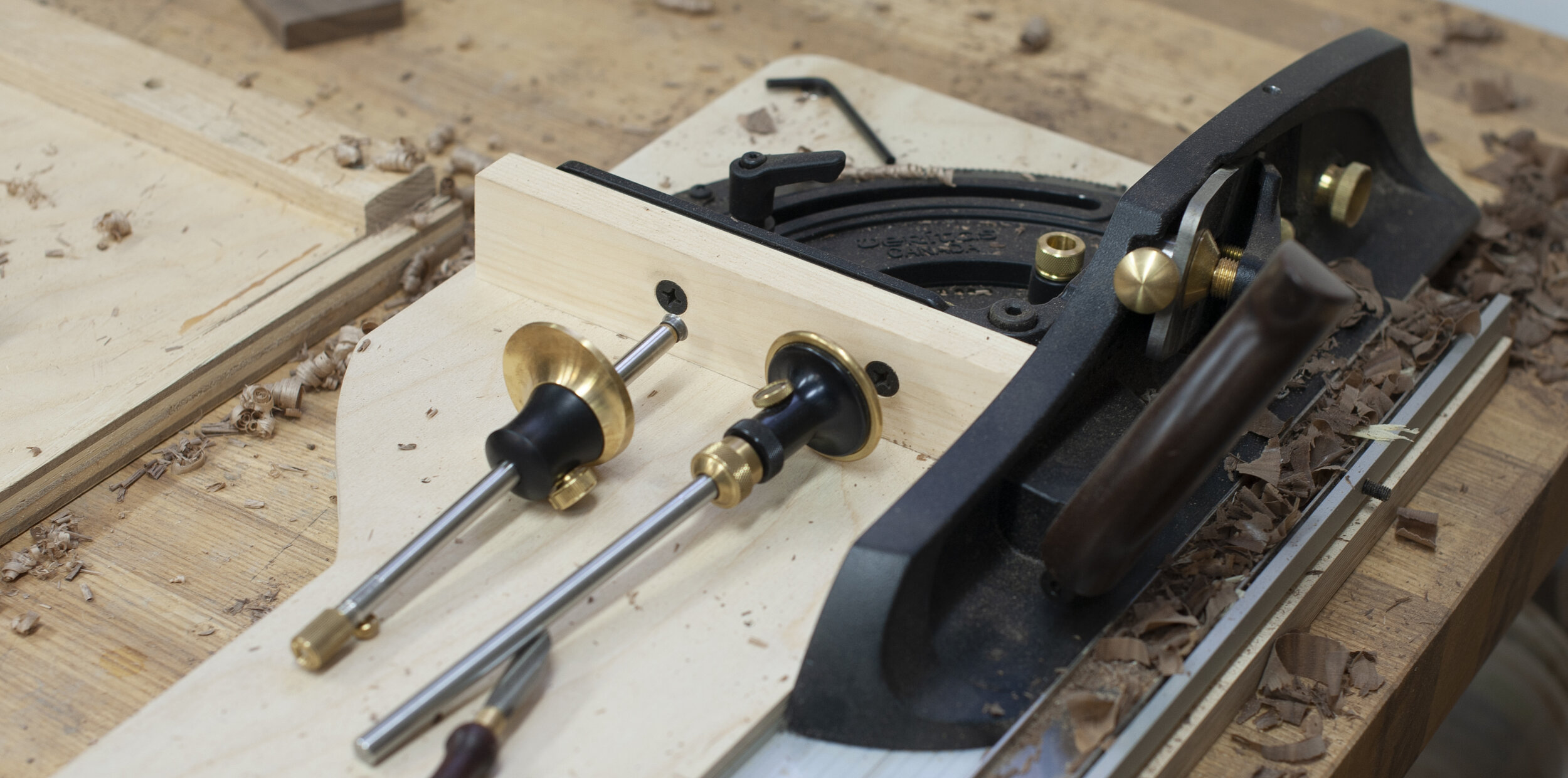Where do you find new inspiration? How can you learn a new technique? What do you do when you have money that just needs to be spent?
Of course, you buy a new tool!
Most makers are tool people. I cannot say everyone finds just as much joy in the tools of their chosen trade as they do with the items they create. Tools are what we use to make our goods; they are foundational to our work. Sometimes we have to compromise with our wallets and buy what we can to get by, but sometimes we are able to purchase the high end tool that takes our work to the next level. And other times we can splurge and spend a lot of money on a tool that we may not need but want more than anything.
Veritas Combination Plane
I recently found myself in that very place. I had receive a number of gift cards for Christmas and decided I was going to buy one of those tools – the one you probably do not need and is way more expensive than you can justify. But I bought it anyway. The tool was a combination plane from Lee Valley. It was expensive and relatively limited in its function. However, it is one of the most beautiful and technically advanced hand planes I have ever used. The combination plane is basically used for grooves and other edge treatments on boards, or used to make decorative elements on the face of small pieces. Like I said, its use is limited. So why did I get it?
As I have mentioned in previous posts, my woodworking seems to be moving away from power tools to a more hand tool focus. Because of this, there are some specialty tools I need to do certain tasks. Grooves and rabbets are one of those tasks that this plane will easily accomplish. I can then move away from the table saw for those types of cuts.
Many ways of accomplishing tasks
This is a very interesting element of woodworking that has always intrigued me. As a woodworker, you must be able to problem solve. Problem solving often requires us to be able to see the issues from many different vantage points and also to see many different solutions to solving those problems. This often includes multiple ways to do the exact same task. For example, to cut a simple groove down the edge of a board, I could use:
my new combination plane
use my table saw with a dado blade
my table saw with a regular blade
my router table with a straight bit
my handheld router with a straight bit
my router plane
a chisel…
I am sure there are many other methods that I have forgotten or just not discovered yet but you get my point. A tool is just another method of accomplishing a task. It may work in a very specific situation or in many situations but it gives you options.
A new tool as inspiration and as a time saver
I used my egg-beater drill for the first time in this project
I often find inspiration in getting a new tool in the workshop. There is an excitement in trying a new process with that tool and perfecting your technique. One of the processes I wanted to try in building this card catalogue project was hand cutting the grooves for the rear panel and also cutting the tongues on some of the parts on the dust frame within the interior of the cabinet. This tool made that task incredibly easy, and quite possibly, faster than using a table saw. In this case, the time it takes to set up a power tool, take test cuts, and then run the final piece through would take more time that setting a hand tool and just making the cut. Of course, that does not make sense if you are running multiple pieces but if it is one or two, that time you save using hand tools is the obvious decision.
Tools are foundational to what we, as makers, do—they allow us to complete our tasks and be creative. Often, those tools are also key to our process as well. There is really nothing like a great tool. When they are as well made as the objects we strive to make in our shops or studios, they can be as motivating and inspirational as the making itself.


